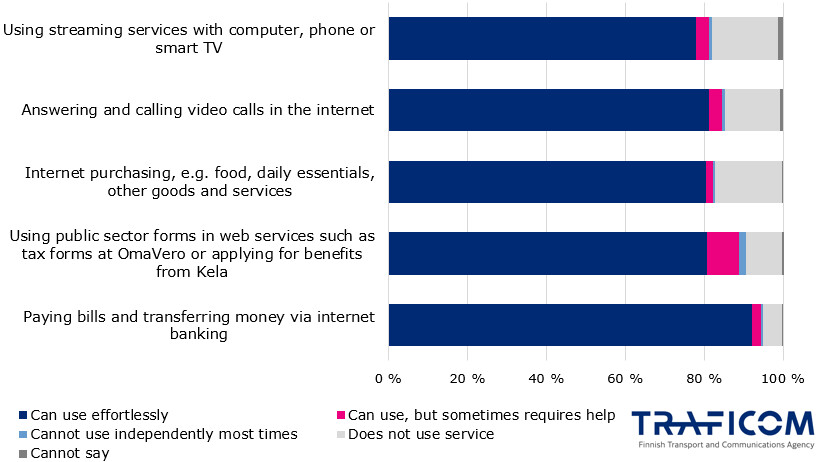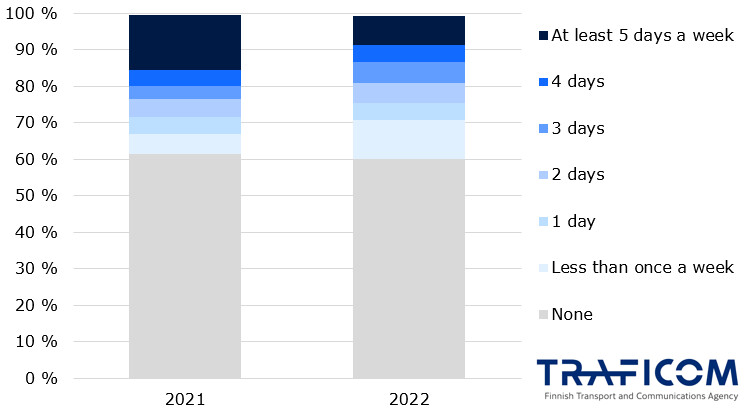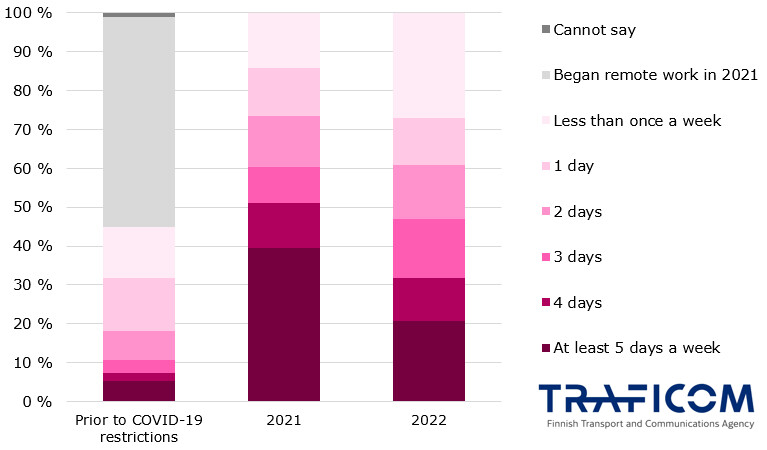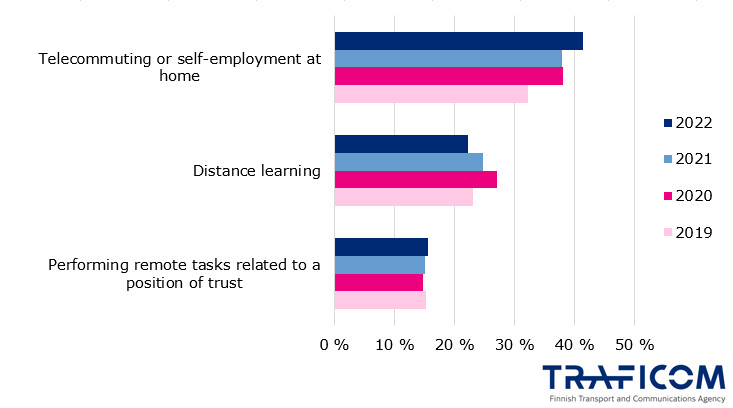According to a consumer survey conducted by the Finnish Transport and Communications Agency Traficom, the majority of consumers have no trouble performing their digital everyday tasks. There are no major differences in skill between different age groups among those who use digital services. However, out of older consumers, a greater number do not use digital services. Most frequently, consumers need help with completing public administration forms. Traficom carries out annual surveys on the use of digital services and devices to monitor how the internet is used to meet different consumer needs, for example.
Digital inequality is a social problem that becomes more serious as more and more services shift to online delivery. Inequality exists at multiple levels. Regional inequality results from the lack of connections enabling the equal use of services. There is also inequality between different groups of people, e.g. different age groups, when one group does not have the digital skills to use online services. In addition, the need for simplified content, accessible colour palettes, subtitles or aids can cause inequality in the digital world.
In order to determine how well Finnish consumers manage various digital everyday tasks, Traficom included questions about consumers’ digital skills in its consumer survey for autumn 2022. In many respects, the results were very positive. A clear majority of consumers estimated that they can use the specified services effortlessly without help. A tenth of the respondents said that they sometimes need help with completing public administration forms. The survey did not define the type of help needed by consumers, i.e. whether they need help with using the service or understanding the content.
80% of the respondents could shop online, make video calls and use streaming services with ease. The majority of those who did not say that they can use the aforementioned services effortlessly said that they do not use these services at all. Half of the respondents aged over 65 said that they do not shop online or use streaming services. There are definitely many reasons why these respondents do not use these services. Perhaps some of them would like to use these services but do not know how.

The results of Traficom’s consumer survey reflect the results of the European Union’s Digital Economy and Society Index (DESI), in which Finland has scored high in the sub-index of human capital, meas prevalence of digital skills. The DESI results are based on the ‘Use of information and communications technology by individuals’ study carried out by Statistics Finland.
The number of telecommuting days has decreased – telecommuting remains a viable option for only some people
During the COVID-19 pandemic, many people worked remotely more often than before. Even in sectors where telecommuting was a rare practice, e.g. education, people had to shift to this new working model. In spring 2021, 15% of working-age consumers telecommuted at least five days a week. In this context, ‘working-age consumers’ refers to people who are aged between 25 and 65. A third worked remotely at least one day per week. This year, only 8% of consumers telecommuted at least five days a week. The number of people telecommuting at least one day per week has remained the same. In 2021 and 2022, approximately 60% of working-age consumers did not telecommute at all. The most common reason for this was that the nature of the job did not allow for telecommuting.

However, the number of telecommuting days has remained higher for telecommuting working-age consumers after the COVID-19 restrictions. In 2022, telecommuting consumers worked at their regular workplace more often than in 2021. In spring 2021, up to 40% of telecommuting working-age consumers worked from home basically for the entire work week. In 2022, only one fifth, i.e. 20%, did this. A three-day telecommuting week has become more popular since last year, when 9% telecommuted three days a week. This year, the number has increased to 15%. The share of consumers who telecommute less frequently than once a week has increased from 14% to 27%.

Since 2019, Traficom has surveyed how many consumers need their personal internet connection to work, do business, perform tasks related to a position of trust or study. In this year’s survey, 56% of consumers said that they need their personal internet connection for one or more of the aforementioned tasks. The number has not changed since last year. In 2022, 41% needed an internet connection for work and 22% for studies.

The consumer survey was carried out by IROResearch Oy. The survey involved interviews with 2,000 Finns over the age of 15. The interviews were conducted over the telephone in August–October 2022. The survey’s maximum margin of error is 2.2% in either direction.
Enquiries
Marja Heinonen, Communications Market Specialist, tel. 029 539 0306, marja.heinonen@traficom.fi (until 3 November 2022), after this, Traficom’s media hotline, tel. 029 534 5648
The table of survey results and time series of the communications services’ consumer survey 2022
Finland in the Digital Economy and Society Index in 2022 (External link)
The ‘Use of information and communications technology by individuals’ study (External link) by Statistics Finland
Traficom’s press release on 15 June 2021: A significant proportion of working-age people did not start working remotely during the pandemic